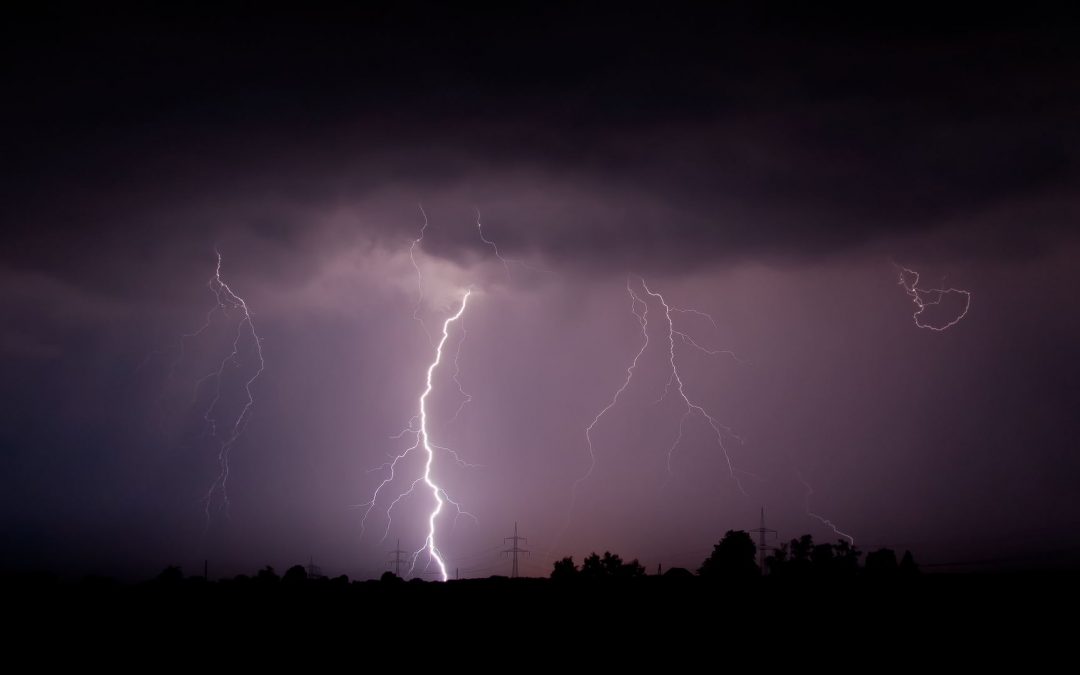It’s raining really hard outside and you’ve been looking forward to settling down and binge-watching your favorite television show. You’re at the end of an episode where you’re just about to find out who the killer is when the power suddenly goes out. The lights quickly turn back on but when you hit the controls on your remote to turn the television back on, nothing happens. A power surge has just hit your home. Learn more about power surges and what you can do to protect your home or building from their effects.
What Happens During a Power Surge?
A power surge is what occurs when there is an increase in voltage in the amount of electricity that is flowing into a building or a home. The voltage is regarding as exceeding well over 120 volts, the standard amount of electricity used to create a sufficient amount of power. When power surges occur, they can cause an extreme amount of damage to electronics, air conditioning units, heating systems, and other appliances by sending thousands or tens of thousands of jolts of electricity into the electrical wiring installed in a building or home. These volts are more than powerful enough to cash computer hard drives, completely destroy circuit boards, and ruin other electrical systems.
What Causes a Power Surge?
Power surges are often known to occur when the flow of electricity into a home or building becomes interrupted and then starts back up again. However, every power surge is unique. The impact that a power surge has is very dependent on the reason the power surge happened in the first place.
Lightning is one of the external factors behind some of the most powerful power surges if given certain atmospheric conditions. Power surges caused by lightning are regarded as some of the most feared types of power surges, but they are also the rarest. If lightning strikes within just one mile of your home or building, it can send up to 200,000 amps of electricity into the wiring. Big storms are another external factor that can also lead to malfunctions in power lines which can also cause power shortages. Because voltage is known to fluctuate, intermittent surges can occur before the power goes completely out.
There are also less serious reasons for why a power surge might happen. These common internal fluctuations might manifest themselves as a light flickering off and on, or you might not even notice anything occurring at all. The use of too many high-powered appliances at one time such as air conditioners, space heaters, and refrigerators can also be the source of power surges in your home. High-powered appliances such as these require a significant amount of electricity to ensure that they are operating smoothly. However, smaller electric devices such as hair dryers can also be behind a power surge occurring in your home. These small power surges might not be powerful enough to cause a circuit breaker to malfunction, but over time they can cause significant damage to expensive appliances and might even lead to their permanent failure.
How to Prevent Power Surges
One of the most important steps you can take to protect your home and other buildings from power surges is to invest in surge protectors. Surge protectors direct excess voltage into ground wire when they detect a higher amount of voltage than usual flowing them. They are then able to restore the normal amount of electricity.
Another measure of prevention against internal power surges is to make sure to unplug every electronic device that you aren’t currently using. There’s no reason to keep appliances like toasters or blow dryers plugged into electricity when they’re not being used.
For extra protection, you can purchase a whole house surge protection system. Whole house surge protectors prove especially useful during lightning-related power surges. These systems act as a wall against excess voltage that manages to get by power strips and work as a protective barrier for all of the electrical devices and appliances in your home. This is an extra measure for those looking to further ensure that their families are protected against the potential effects of power surges.
Making sure your appliances and other electronic devices are protected by the use of surge protectors is the crucial first step in taking care of the wiring in your home or building. Be sure to purchase power strips with a substantial amount of surge protection embedded to help fight against potential internal fluctuations.

